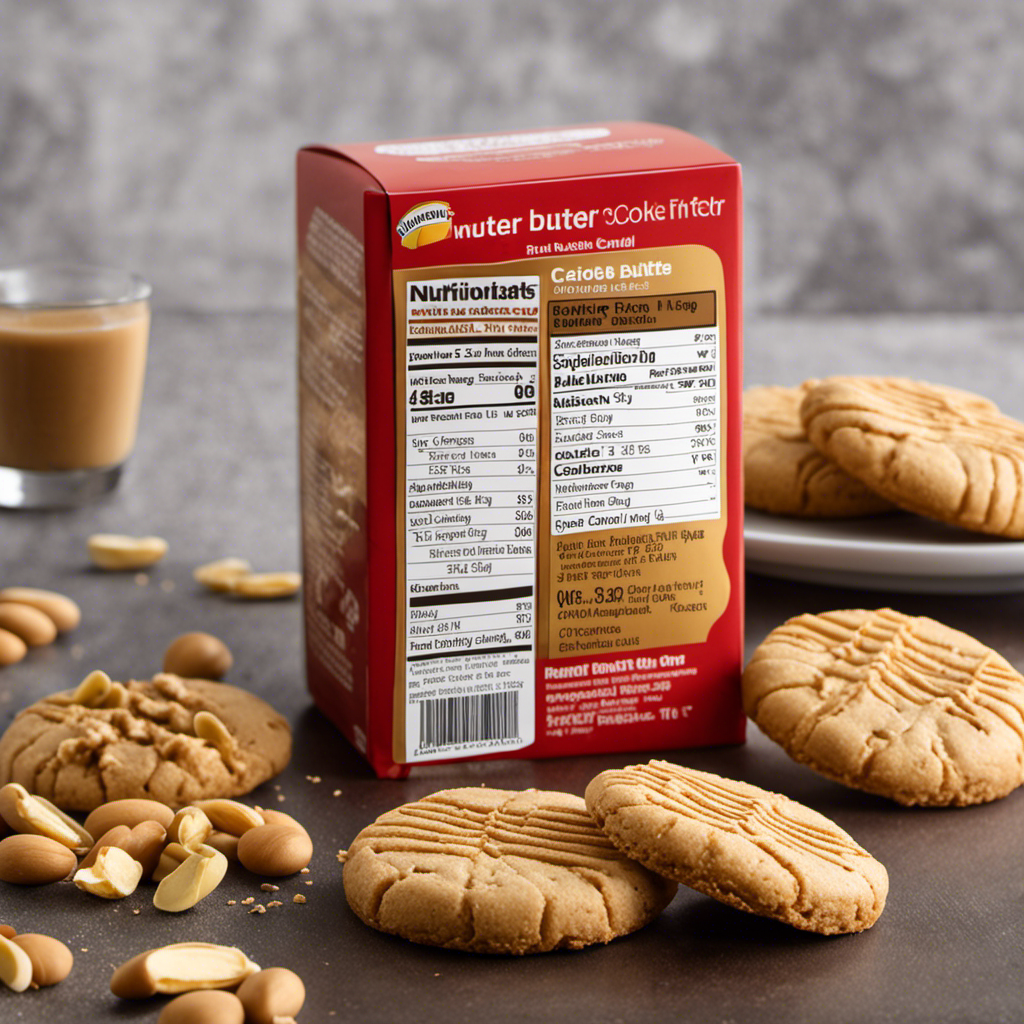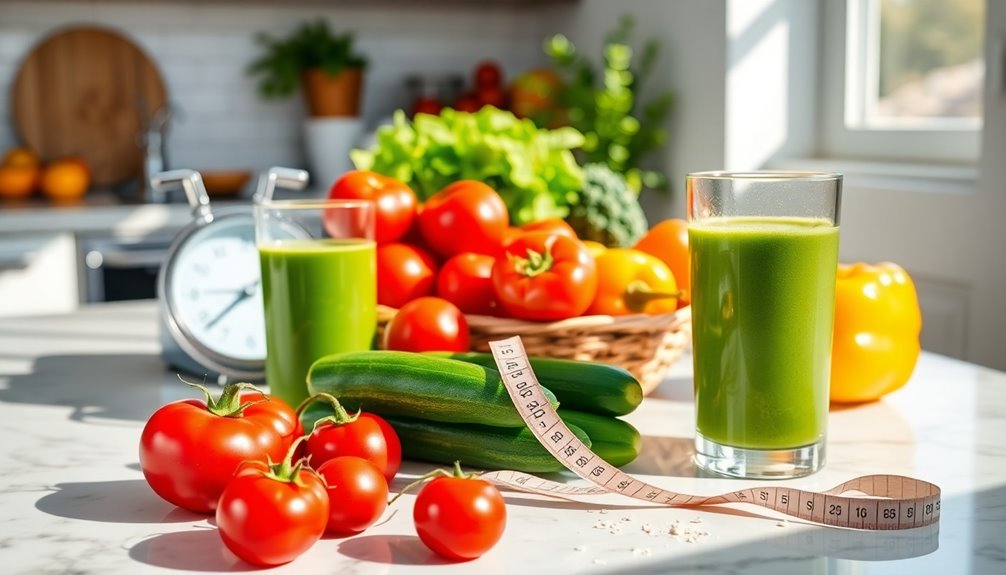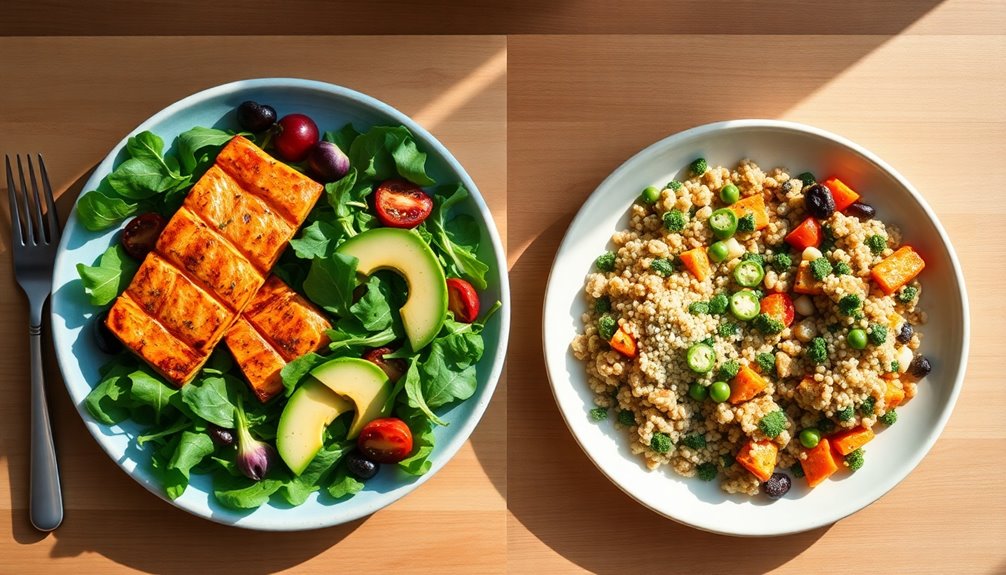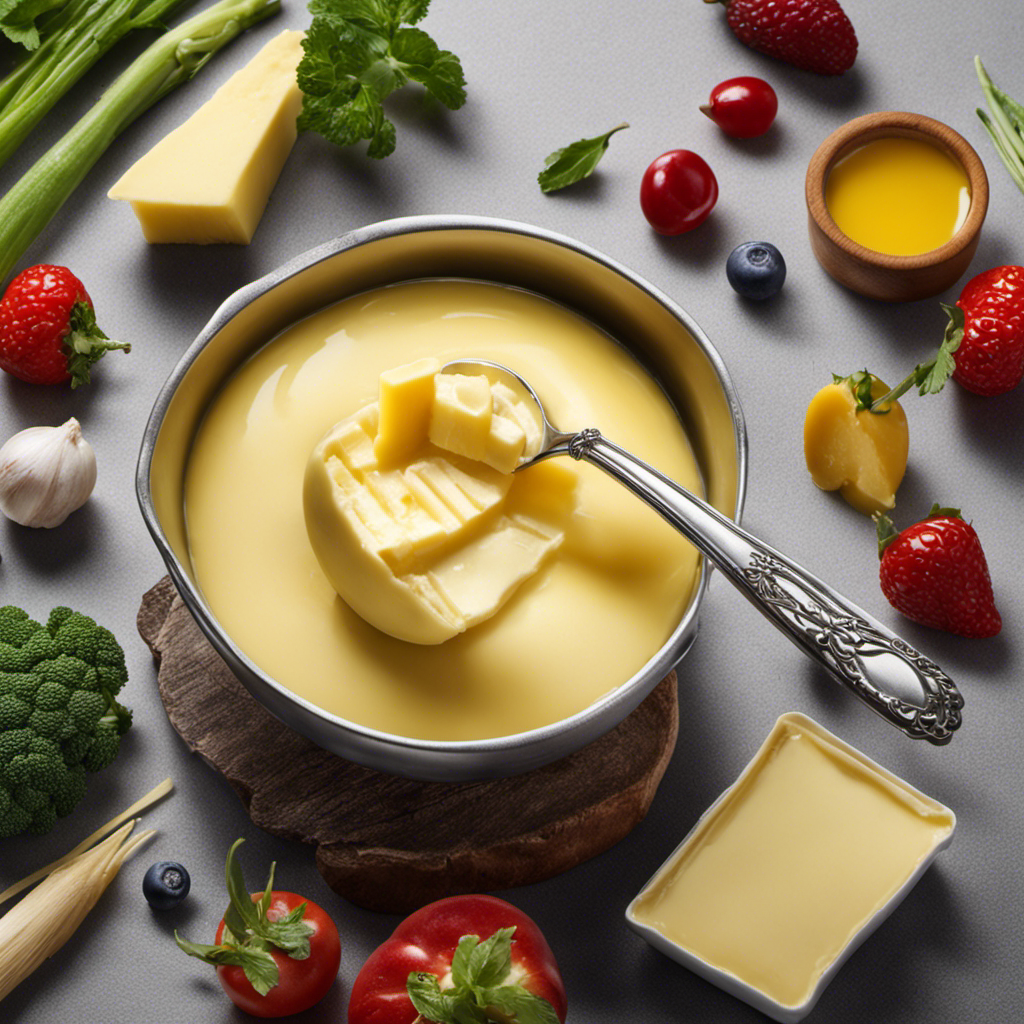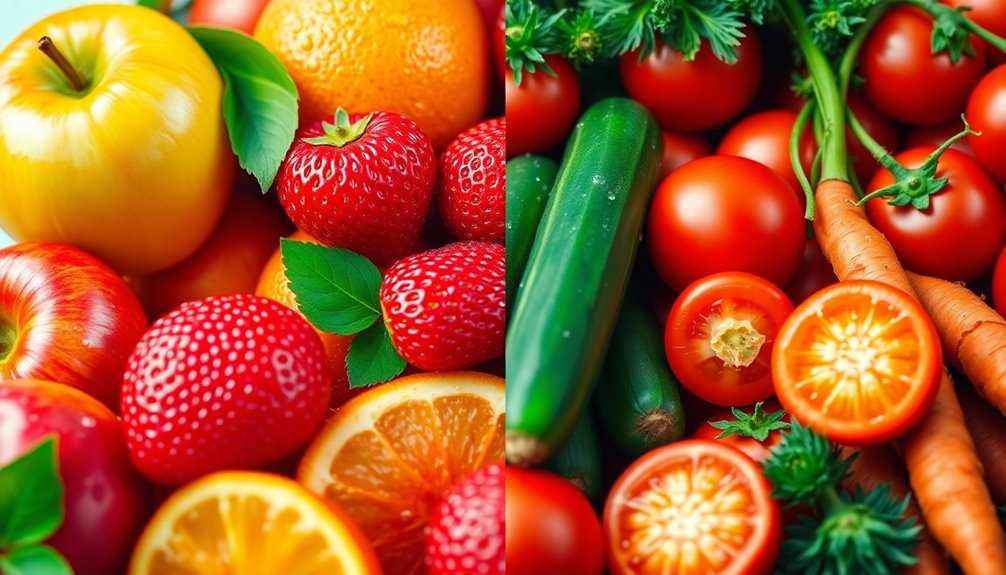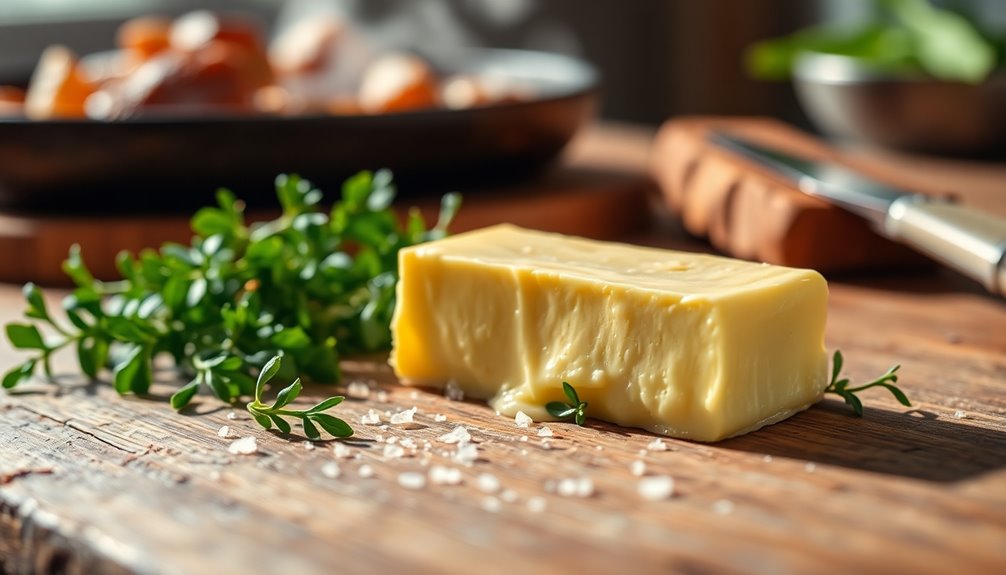I absolutely adore indulging in a delicious slice of toast covered in butter! Have you ever thought about the number of calories hiding underneath that crispy, golden exterior?
Well, fear not, because in this article, we’re going to dive deep into the world of toast and butter to uncover the truth about their caloric content.
Get ready to be surprised as we break down the numbers and explore some healthier alternatives to satisfy your toast cravings.
So, let’s dig in and find out just how many calories are in toast with butter!
Key Takeaways
- Toast with butter is a source of carbohydrates and provides energy for the body.
- Butter is higher in saturated fat and cholesterol, while margarine is usually made with vegetable oils and contains unsaturated fats.
- Portion control is crucial for managing caloric intake and preventing weight gain and health issues.
- Considering the type and amount of fat in butter and margarine is important for making healthier choices.
The Basics of Toast and Butter
You’ll want to know the basics of toast and butter before determining how many calories are in it.
Toast is made by heating bread until it becomes crispy and brown. Butter is a dairy product made from churning cream or milk.
Toast and butter are a popular breakfast option and can provide some nutritional benefits. Toast is a source of carbohydrates, which provide energy for the body. Whole grain bread can also provide fiber, which aids in digestion. Butter contains vitamins A, D, E, and K, as well as fatty acids that are essential for brain development and hormone production.
However, it is important to note that both toast and butter can also be high in calories. Understanding the caloric content of these foods can help you make informed dietary choices.
Now, let’s delve into understanding the caloric content of toast with butter.
Understanding Caloric Content
When it comes to choosing between butter and margarine, it’s important to consider their nutritional differences.
While butter is higher in saturated fat and cholesterol, margarine is usually made with vegetable oils and contains unsaturated fats.
Portion control is also crucial, as both butter and margarine are high in calories, and consuming too much can contribute to weight gain and other health issues.
It’s essential to make informed choices and practice moderation when it comes to including butter or margarine in our diet.
Butter Vs. Margarine
If you’re comparing butter and margarine, you might be wondering which one is healthier. While both have their pros and cons, it’s important to understand the health implications of each.
Here are a few points to consider:
-
Butter is made from animal fat and contains saturated fat, which has been linked to an increased risk of heart disease.
-
Margarine, on the other hand, is typically made from vegetable oils, which contain unsaturated fat. This type of fat is considered healthier for the heart.
-
However, some margarines may be made using a process called hydrogenation, which can create trans fats. Trans fats are known to raise bad cholesterol levels and increase the risk of heart disease.
In conclusion, when comparing butter and margarine, it’s important to look at the type and amount of fat they contain. Opting for margarine made from vegetable oils, without hydrogenation, may be a healthier choice.
Now, let’s talk about portion control and its impact on our overall health.
Portion Control
To maintain a healthy weight and prevent overeating, it’s important to be mindful of your portion sizes. Portion control plays a crucial role in managing our calorie intake and promoting overall health.
When we consume larger portions, we tend to consume more calories, which can lead to weight gain and various health problems. By practicing portion control, we can ensure that we’re consuming the right amount of nutrients without overindulging.
Research has shown that portion control can have numerous health benefits, including weight loss, improved blood sugar control, and reduced risk of chronic diseases such as heart disease and diabetes.
Calorie Breakdown of Toast
When it comes to toast, one of the key decisions is whether to use butter or margarine. Both options have their pros and cons.
Butter is a natural product made from animal fat, while margarine is a processed spread made from vegetable oils.
Additionally, another factor to consider is whether to toast the bread or leave it untoasted. Toasting can add a delicious crispy texture, but untoasted bread may be preferred for its softness.
Ultimately, the choice between butter or margarine and toasted or untoasted toast comes down to personal preference and dietary needs.
Butter or Margarine
Butter has a rich flavor that complements toast perfectly. When it comes to spreading on your morning toast, you might be torn between using butter or oil. Here are some key points to consider:
-
Butter vs. Oil:
-
Butter is made from cream, while oil is extracted from various sources like plants or seeds.
-
Butter has a higher saturated fat content than most oils.
-
Oils, particularly those high in unsaturated fats like olive oil, can provide heart-healthy benefits.
-
Health Benefits of Butter:
-
While butter is often criticized for its high saturated fat content, it does offer some nutritional benefits.
-
Butter is a good source of vitamins A, D, E, and K.
-
It also contains healthy fats that are important for brain function and hormone production.
Toasted or Untoasted?
If you prefer a warm and crispy texture, toasting your bread may be the way to go. Toasting not only adds a delightful crunch, but it can also enhance the flavor of your bread. There are different toasting methods that you can choose from, including using a toaster, toaster oven, or even grilling your bread. Each method has its own unique way of achieving that perfect level of toastiness.
To give you a better understanding of the nutritional comparison between toasted and untoasted bread, here is a table that breaks down the calorie content:
| Toasting Method | Calories per Slice |
|---|---|
| Untoasted | 70 |
| Light Toast | 80 |
| Dark Toast | 90 |
As you can see, toasting your bread adds a few extra calories compared to untoasted bread. However, the difference is minimal and can easily be balanced within a healthy diet. Ultimately, the choice between toasted and untoasted bread comes down to personal preference and the texture you desire.
Calorie Breakdown of Butter
To find out the calorie breakdown of butter, you can refer to the nutrition label on the packaging. Here are some key points to understand about the calorie content of different types of butter and the impact of cooking methods on its caloric content:
-
Butter is a high-calorie food, with about 102 calories per tablespoon.
-
The calorie content of butter can vary depending on the type. For example, salted butter and unsalted butter have the same calorie count, but flavored or specialty butters may have additional calories due to added ingredients.
-
The cooking method used can also affect the calorie content of butter. When butter is melted, it becomes more calorie-dense because the water content evaporates, leaving behind only the fat.
-
Using butter in cooking or spreading it on toast can add significant calories to your meal or snack.
Understanding the calorie breakdown of butter is important when considering the overall calorie count of your toast with butter.
Combining Toast and Butter: Calorie Count
When combining toast and butter, you’ll want to be mindful of the calorie count. Understanding the caloric content and practicing portion control are key factors in maintaining a balanced diet. Toast, typically made from bread, is a staple in many breakfast routines. It is important to choose whole grain bread for added nutritional value. Butter, on the other hand, is high in fat and calories. While it can add flavor to your toast, it should be used sparingly. To give you an idea of the calorie count, here is a table showcasing the approximate calories in different types of toast with one tablespoon of butter:
| Type of Toast | Approximate Calories |
|---|---|
| White Bread | 79 calories |
| Whole Wheat | 78 calories |
| Multigrain | 69 calories |
Factors Affecting Caloric Content
Understanding the factors that affect the caloric content of toast and butter is essential for maintaining a balanced diet. Here are some key factors to consider:
-
Type of bread: Different types of bread have varying calorie contents. Whole wheat bread, for example, tends to have more fiber and nutrients compared to white bread, making it a healthier choice.
-
Amount of butter: The more butter you add to your toast, the higher the caloric content will be. It’s important to be mindful of portion sizes when spreading butter on your toast.
-
Toppings: Adding toppings like jam, honey, or peanut butter can significantly increase the caloric content of your toast. Opting for healthier toppings like sliced fruits or avocado can be a nutritious alternative.
When it comes to weight loss, it’s important to be mindful of these factors. Choosing whole wheat bread, using less butter, and opting for healthier toppings can help you maintain a calorie deficit and support your weight loss goals.
Additionally, considering the nutritional value of bread, such as its fiber and nutrient content, can also contribute to a well-rounded and healthy diet.
Healthier Alternatives to Toast With Butter
Now that we’ve discussed the factors that can affect the caloric content of toast with butter, let’s explore some healthier alternatives to this classic breakfast option.
There are plenty of delicious and nutritious spreads that you can use as toast toppings, which can add flavor and variety to your morning routine.
One popular choice is avocado, which is packed with healthy fats and essential nutrients.
Another option is nut butter, such as almond or peanut butter, which provides a good source of protein and fiber.
For a sweeter option, you can try topping your toast with fresh fruits like berries or sliced banana.
These alternatives not only provide a different taste experience but also offer additional nutritional benefits compared to butter.
Frequently Asked Questions
Can I Use Margarine Instead of Butter on My Toast?
Yes, you can use margarine instead of butter on your toast. There are nutritional differences between the two spreads, such as margarine being lower in saturated fat. It’s important to choose a spread that fits your dietary needs.
How Does the Type of Bread Affect the Calorie Content of Toast?
Toasting bread does not significantly change its calorie content. However, the type of bread you choose can affect the overall calorie count of your toast. Whole grain breads tend to have more calories than white bread.
Does the Amount of Butter Spread on the Toast Affect the Overall Calorie Count Significantly?
When it comes to the calorie count of toast with butter, the amount of butter spread on the toast can indeed have a significant impact. However, other factors like the brand of butter and toasting the bread can also play a role.
Are There Any Health Benefits to Eating Toast With Butter?
There are health benefits to eating toast with butter. It provides essential nutrients like vitamins, minerals, and healthy fats. Butter can enhance the flavor of toast and contribute to a satisfying and balanced breakfast option.
Can I Add Toppings Like Jam or Peanut Butter to My Toast Without Significantly Increasing the Calorie Count?
Adding toppings like jam or peanut butter to toast can significantly increase the calorie count. Jam typically has less calories than peanut butter, but both should be consumed in moderation to maintain a balanced diet.
Conclusion
In conclusion, when it comes to toast with butter, it’s important to be mindful of the caloric content.
While toast itself is relatively low in calories, the addition of butter can significantly increase the overall calorie count.
However, there are healthier alternatives to consider, such as using low-fat spreads or avocado instead of butter.
By making simple swaps, you can still enjoy a delicious and satisfying breakfast without compromising your calorie intake.
Remember, every choice we make plays a role in our overall health and well-being.
So, choose wisely and toast to a healthier you!

